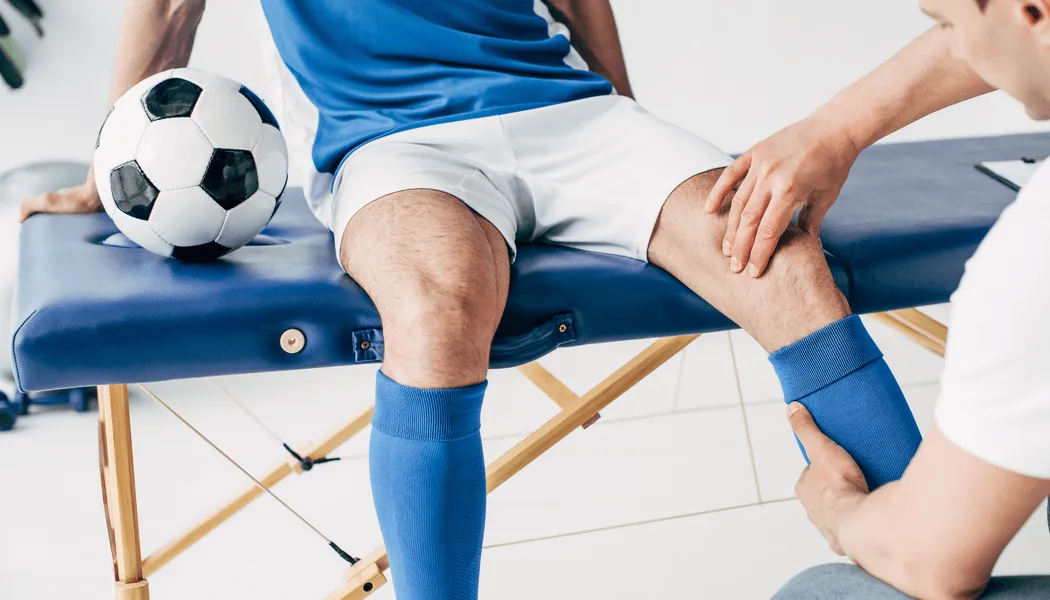Sports Injury Physiotherapy
The primary role of sports physiotherapists is to prevent and manage injuries resulting from exercise and sport participation of all ages and with various levels of ability.

What is Sports Injury Physiotherapy
The primary role of a sports physiotherapist is to prevent and manage results from exercise and event participation of all ages and with various levels of ability. Sports physiotherapy offers evidence-based advice on safe participation in exercise. Moreover, these trained professionals will promote an active lifestyle to aid individuals in improving and maintaining their quality of life.
Exercise and sports physiotherapists will play a major role in helping out athletes of all ages and various levels of ability to enhance their performance rate.
Types of Sports Physiotherapy
There are various types of physiotherapy for sports injuries listed by a recognized professional based on the type of injury sustained by the athlete. The program will include various parts, like mobilizing exercises, strengthening exercises, pain relief techniques, and even functional skills. The main goal is to maximize recovery by tailoring the rehabilitation to match individual goals and monitoring the progress completely.
Strengthening Exercises:
These sports injury physiotherapy exercises are designed to increase the strength of a specified group of muscles. Such exercises will overload the muscle until that point of muscle fatigue. The overload and force of the muscle will encourage growth and increase strength. Weak muscles increase the risk of injury to surrounding soft tissues and joints. A reputed sports physiotherapist will assess, diagnose and then provide proper strengthening exercises for you.
Soft Tissue Mobilization:
Soft tissue mobilization is a generic term for various sports physiotherapy forms. A well-trained sports physiotherapist will use some of the trained manual techniques for affecting muscles and other soft tissues. Soft tissue mobilization will further relax the muscles, promote healing, and break down the scar tissue.
Pain Management:
Pain Management is one way to help people deal with pain and its vital impact on daily life. The aim is to alleviate pain whenever it is possible. If it is not possible, pain management will reduce pain and teach people to manage it daily. Sports injury physiotherapy allows people to control their pain and learn proven strategies to improve their quality of life and independence.
When to go to a Sports Injury Physiotherapy Clinic
A sports physiotherapist is a recognized professional who demonstrates advanced competencies in promoting safe physical participation, adaptation of rehabilitation and providing advice to prevent injury. Sports injury physiotherapy can help you restore your optimal bodily functions and will also contribute to enhancing performance. It is true that sports physiotherapists will work with athletes of different abilities and ages and will ensure the highest standard of ethical and professional practice.
While playing or during a practice session, visiting sports physiotherapists is the first call if you hurt yourself badly. The injury can occur anywhere, in the muscles, nerves, joints, or even bones. Sometimes, the injuries are deep yet not visible. But, if you feel persistent pain, visiting sports physiotherapists for proper treatment is a good call.
Risks of Sports Injuries
If you think about it, multiple risk factors are associated with sports injuries. These are subject to behaviors and characteristics like sex, skill, age, using protective equipment, game strategies, and playing positions. The risk can further be the game or sports characteristics like playing surface, level of competition, and the weather condition.
The multiple measures of injury incidence are injury risk, injury rate, odds of an injury, injury hazard, and the meantime of playing exposures to injuries. If proper measures are not taken care of, sports injuries can prove to be fatal at some point, especially if it hits any particular nerve or muscle in the body. Also, basic sprains, black spots, and joint pains are too common.
How to Prevent Sports Injuries
Following some simple steps can help you to keep sports injuries at bay. So, without wasting time, let's learn how to prevent it.
- Take some time off and plan for at least one day off a week or at least one month off per year to walk into a physiotherapy clinic. This day is for your body to recover.
- Make sure to wear the right gear. Players must wear proper protective equipment like pads, face guards, mouthpieces, helmets, and more.
- Conditioning exercises are also important in between the practice sessions for strengthening our muscles, which are used to play.
- On the other hand, dedicate some time to stretching exercises after practice or games to increase your flexibility. Stretching needs to be a part of your daily fitness routine.
Apart from that, learn the proper techniques, take breaks in between to keep injuries at bay, and don't hesitate to ask for guidance from an expert physiotherapist. And never try to play through pain, as that's not good for your body.
Preventing sports injuries through proper training and conditioning
- Proper training and conditioning are key to preventing sports injuries. This includes developing the necessary strength, flexibility, and endurance to handle the demands and following a training program that gradually increases in intensity and volume.
- It is important to practice proper technique and use appropriate equipment to avoid injuries. Additionally, it is essential to properly warm up and cool down before and after physical activity to help prevent injuries.
- Physiotherapists can work with athletes to develop a personalized training and conditioning programs and provide guidance on proper technique and equipment use.
The role of physiotherapy in rehabilitating sports injuries
- It can range from minor strains and sprains to more serious injuries such as fractures and ligament tears. Regardless of the severity of the injury, physiotherapy can play a key role in the rehabilitation process.
- Physiotherapists can design a treatment plan that includes exercises to improve strength, flexibility, and range of motion and modalities such as heat or cold therapy to reduce pain and swelling.
- In addition to traditional physiotherapy, physiotherapists may also use specialized techniques such as massage, taping, or dry needling to help athletes recover from injuries and return to their sport as quickly and safely as possible.
Maximizing performance and minimizing risk through physiotherapy
- Sports physiotherapy not only assists athletes in recovering from injuries but can also enhance performance and reduce the likelihood of future injuries.
- This may include assessing an athlete's movement patterns, identifying any imbalances or areas of weakness, and designing a program to address these issues.
- Sports physiotherapists can also guide proper nutrition, hydration, and recovery techniques to help athletes optimize their performance and reduce the risk of injury.
Treatment options for common sports injuries, including strains, sprains, and fractures
Treatment options will vary depending on the specific injury, but some common treatments include the following:
- It includes strains (overstretched or torn muscles or tendons), sprains (overstretched or torn ligaments), and fractures (broken bones).
- Treatment for these injuries will depend on the severity of the injury and the specific structure involved. In general, treatment may include rest, ice, compression, and elevation (RICE) to reduce swelling and pain, as well as physiotherapy exercises to improve strength, flexibility, and range of motion. A physical therapist can help design a rehabilitation program to help the injured area heal and regain strength.
- Non-steroidal anti-inflammatory drugs (NSAIDs) such as ibuprofen can help reduce pain and inflammation.
- For more severe injuries, surgery may be required. Sports physiotherapists can work with athletes to develop a rehabilitation program to aid in their recovery from surgery and enable them to return to their sport safely and efficiently.
Sports Injury Physiotherapy Treatments at Physiotattva in Bangalore & Hyderabad
There are multiple sports injury physiotherapy in Bangalore and sports injury physiotherapy in Hyderabad used for managing sports injuries at Physiotattva. Initially, you will be advised to go for the ice compression to lower the pain for a certain time, but it will temporarily relieve you. Hot and cold compression is the most generic help to go through. But, in the end, the laser treatments under therapeutic sessions will help lower the pain from within.
Frequently Asked Questions
What are the different types of sports injury treatment?
What are the main types of sports injuries?
Related Services
Related Conditions
Related Treatments
Related Symptoms
Related Therapies
Our Professionals
Physiotherapy in Bangalore
Related Blogs
Get In Touch

















%20(1)-p-3200.jpeg)


.jpg)
.webp)
.webp)
.webp)

